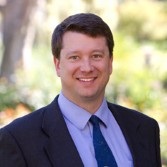
Bruce Betts' Online College Intro Astronomy Course 2015 Certificate Quiz

To get a Certificate of Achievement for taking the 2015 Bruce Betts Introduction to Planetary Science and Astronomy class, a Random Space Fact (RSF) is given in each class designed to be "the" RSF that users will have to recognize later to get the certificate. After all the classes are done, we at The Planetary Society will have an online multiple choice quiz accessible from the class page http://planetary.org/bettsclass. Note: even the "incorrect" choices will be valid scientific facts, just not those identified in the classes.